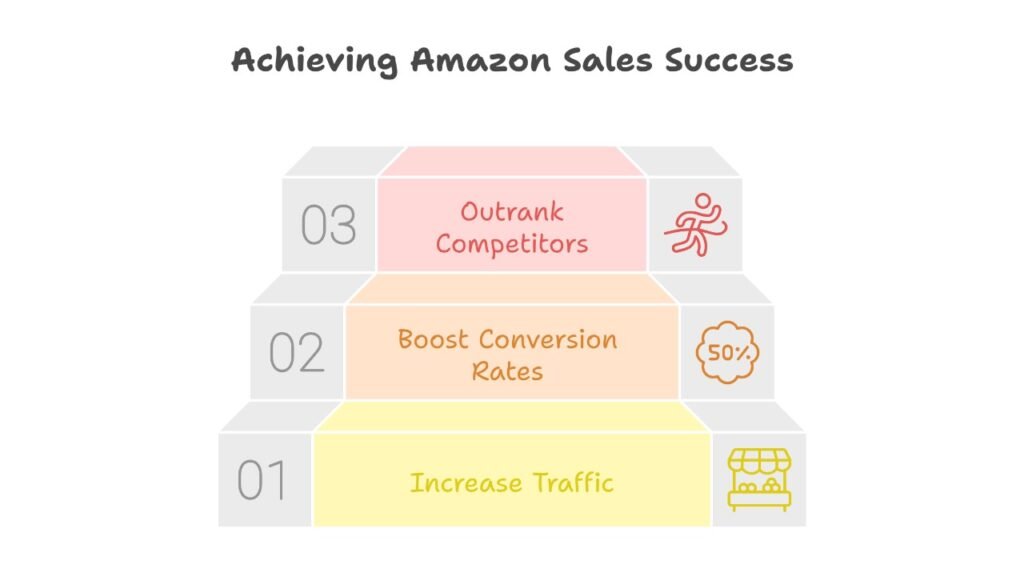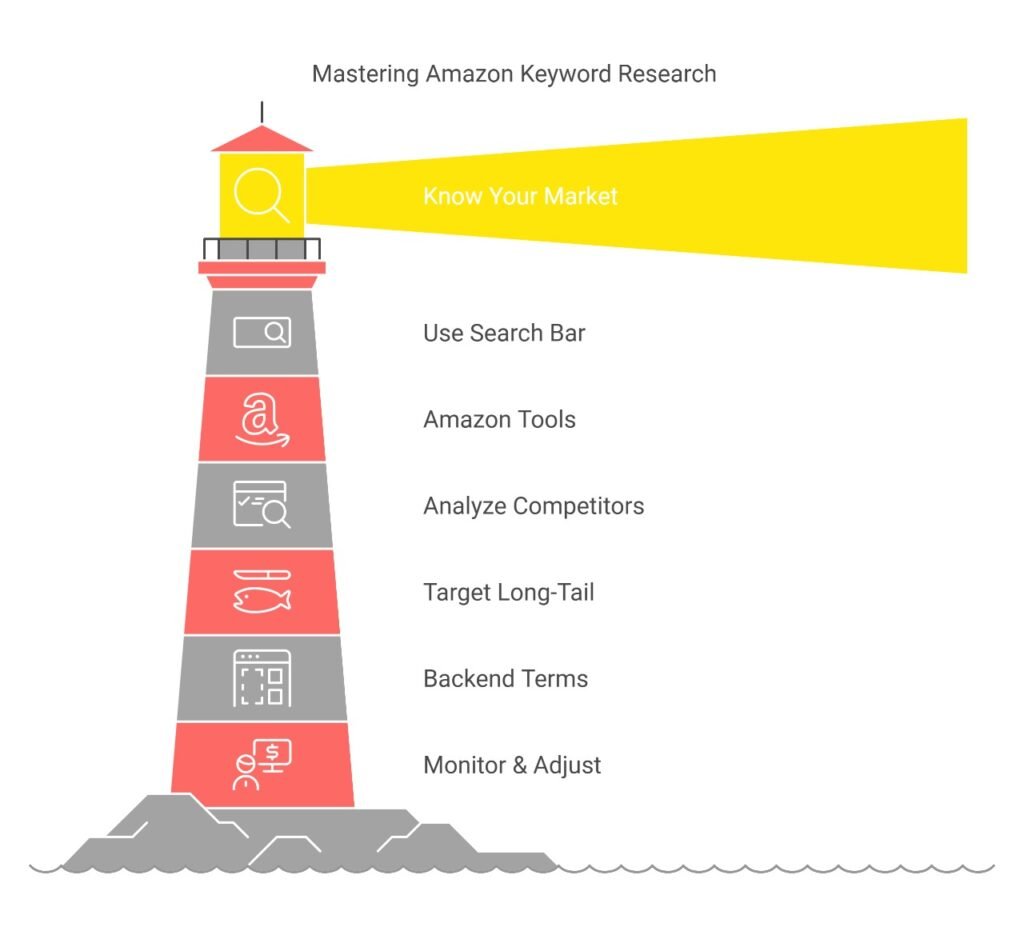The Ultimate Guide to Amazon Keyword Research
In the world of e-commerce, visibility is everything, and nowhere is this truer than on Amazon. When millions of sellers compete for a customer’s attention, competition can be stiff. In order to stand out in the crowd, sellers need to optimize their product listings, and the best method of optimization has been through keyword research. This guide is aimed to walk you through the importance of keyword research on Amazon as well as its execution.
What is Amazon Keyword Research?
Amazon keyword research is the identification of search terms which a potential customer uses in searching for a product. Understanding these terms allows you to reorganize your product listings according to the intent of customers looking for them, thus increasing the visibility of your products and the chances of sales.
Why is keyword research important to the Amazon Seller?
- That, in turn, increases clicks and therefore expands the traffic to your product page.
- They assist in boosting the conversion rates as visitors on to your product page are likely to convert: increase the conversion rate as visitors on to the product page are likely to make a purchase.
- Using the correct keywords will make you rank above your competitors, and your product will attract more potential buyers.

How to Do Your Amazon Keyword Research in Steps
Know your target market.
Step back and identify who your target customers are. What are their needs, preferences, and purchasing habits? Knowing your audience can really give you a head start to predict the words they would likely to put in search bars to find your products.
Use Amazon’s Search Bar for Suggestions
One of the easiest tools for keyword research is the Amazon search bar. At times when you are typing in a product name or a related term, amazon gives you autocomplete suggestions that indicate what other people are searching for. Use this as primary or long-tail keywords based on what customers are looking for.
Amazon-Specific Keyword Tools: Although using the search bar that is made available on the website of Amazon is very good in itself, specialized tools take keyword research to a new level. Some of the tools are:
Helium 10: Helium 10 offers an advanced suite for the seller of Amazon with keyword research, product research, and competitor analysis
Jungle Scout: Jungle Scout offers keyword search volume data and trends, making it easier to choose the most impactful keywords.
AMZ Scout Keyword Tracker and Research: Letting you uncover some amazing, hidden opportunities.
It will sometimes let you know the high-volume keywords, competition levels, and some of the related search terms that might not have otherwise surfaced.
Competitor Listings Analysis:
One great way to find some terrific keywords is by analyzing competitor listings. Find the best sellers in your product category and have a look at what keywords were used in the product titles, bullet points, and description. You wouldn’t want to copy theirs word-for-word, but this analysis will give you a much clearer idea of what does work.
Target Long-Tail Keywords
Long tail keywords are longer, more-specific search phrases. Such terms get fewer searches, but they often have larger conversion rates because they better match the intent of a customer in their searches. For example, instead of targeting the keyword “coffee mug,” seek a term like “large insulated coffee mug with lid.”
Target Backend Search Terms
Amazon allows you to add keywords that are not visible to customers but will be used by the A9 algorithm to index your product. Good use of this space can be to fill it with synonyms, alternative spellings, and related terms. Remember to stay well within the character limit and avoid duplicating keywords already on your product listing.
Monitor and Adjust Your Keywords
Keyword research is not something that’s done once and set aside. Consumer behavior changes and search patterns are dynamic; therefore, it becomes pretty crucial to keep a check on such keywords time and again. Use tools like Helium 10’s keyword tracker. This will enable you to keep an eye on your keyword ranking and take relevant changes well in time to still stay ahead in the competition.

Best Practices to Use Keywords with Your Product Listing
Optimize Your Product Title: Position the key keyword at the beginning of your product title. Since it has such a big influence on ranking, Amazon gives strong weight to keywords appearing in the title.
Utilize Bullet Points: Use bullet points to draw attention to the most important features of your product. Emphasize using relevant keywords to enhance the illustration.
Write Compelling Product Descriptions: Include keyword usage so your descriptions provide all necessary information to purchase while boosting SEO.
Use Backend Keywords Also: Fill out the backend keyword fields to ensure your product is indexed on additional search terms while avoiding keyword stuffing.-Mistakes in Amazon Keyword Research
Keyword Stuffing: Overuse of keywords fills up your listing in an unreadable manner and may result in penalties.
Avoiding the use of Long-Tail Keywords: Just as important to consider is high volume, yet in avoiding so, many overlook long-tail keywords that expand reach.
Forgetting the Process of Ongoing Optimization: Unless keyword updates are made, most products lose their sight over time
Conclusion
Keywords form a huge part of any successful Amazon selling strategy. Understanding and utilizing the most relevant keywords in your product listings can increase visibility exponentially; attract more potential customers and thereby sell through the roof. Analyze competitors with the proper tools, refine the keywords continuously, and stay ahead of the competition with the ever-evolving needs of Amazon shoppers.
